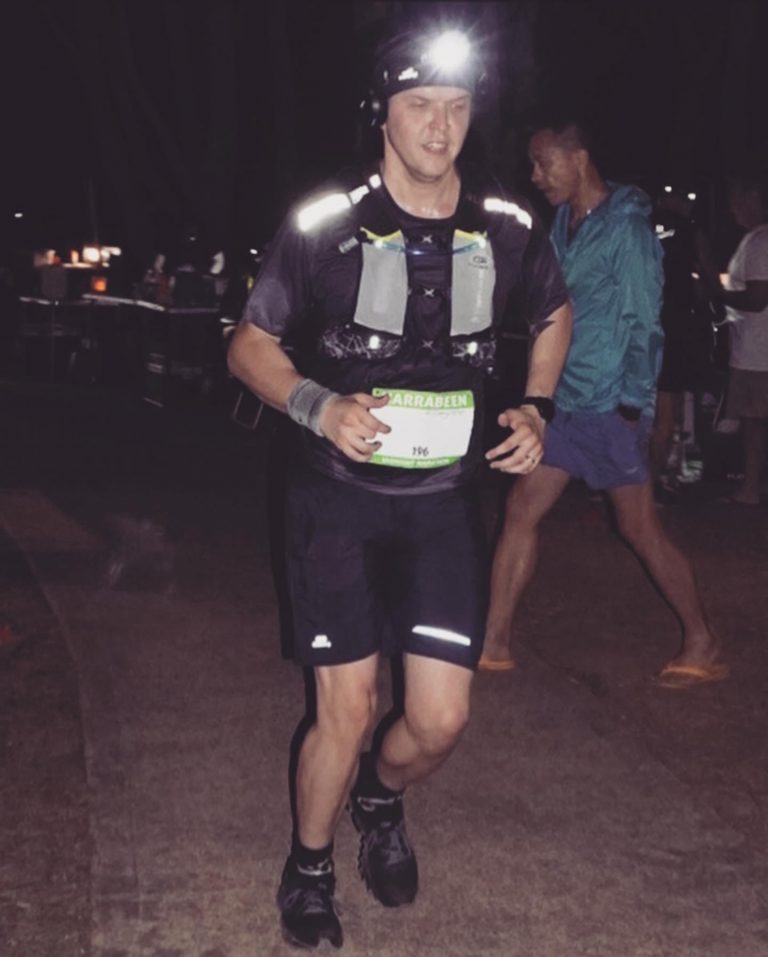Introduction
Sebastian Kienle is one of the popular triathletes from Germany, winning the 2014 Ironman World Championship. He is known for collecting titles one after another in Triathlon.
One of Kienle’s success highlights is winning the Ironman 70.3 Germany in Wiesbaden, breaking a personal new record. Renowned for possessing a will of iron is something that Kienle didn’t accomplish overnight. It is all the results of his months and years of intense training, high-caliber discipline, and strong dedication.
Who wouldn’t want to accomplish a similar feat, right? If you want to know more and get some ideas on how to become a great triathlete, read on and find out how Sebastian Kienle made it all to the top!
Who is Sebastian Kienle?
Born and raised in Germany, Sebastian Kienle is a 36-year-old professional triathlete who accomplished many notable titles in playing the Triathlon race.
At the age of 8, Kienle started to love triathlon sports. It all happened when his father brought him to watch a triathlon event. He then suddenly fell in love with the sports with what he witnessed and knew that he would be one of those professional triathletes when he grew older.
Then, about four years later, he joined his first-ever Triathlon competition at the age of 12. Talk about starting them young!
The event was held in Germany in 2005, Kienle’s first XTERRA Triathlon race. Competing for the first time didn’t hinder him from winning the race, and young Sebastian was even noted saying he had “an absolutely great race.”
Fast forward to 2009, he competed and won another title, the Ironman 70.3 Germany in Wiesbaden. The following year, he joined another race in the 2010 Challenge Roth triathlon and placed second.
Year by year, Kienle has slowly become a stronger and greater triathlete, collecting one title after another. One of his success’s main peaks was when he consecutively won the Ironman 70.3 World Championship in 2012 and 2013.
In 2014, he won a new title competing in the European Ironman Championship. The same year, he was able to achieve his ultimate dream, a maiden Ironman World Championship victory in Kona, Hawaii, and Kienle also placed second title (2016), a fourth palace (2017), and third spot (2019).
Sebastian Kienle's Workout Routine
Becoming an Ironman championship holder like Sebastian Kienle results in is a no easy feat. You would have to go through the needle hole to accomplish what he did.
From his months and years of dedication in regular, intense training and a strong dedication to enduring the pain, he has been through it all. Before the day of the race, he has always set himself in outstanding condition both physically and mentally. Here is the detailed workout routine of the 2014 Ironman World Champion.
Swimming Leg
Combining endurance sets together with speed sets and short rest intervals are the main key workouts of Sebastian Kienle when doing his workout. Putting too much on performing drills and stroke technique isn’t enough to condition yourselves.
“Just doing drills will not help your technique. Doing drills right is important, but just going through the motions is not effective without knowing exactly what you’re doing in the water,” Kienle says.
Sample workout:
Kienle repeated this workout four times, accompanied by three-minute rest in each set.
- 400 moderate pull
- 4×100 with 5 seconds rest
- 4×50 with 5 seconds rest
- = 4000-yard main set
Cycling Leg
Another way of building his core and strength is by incorporating a weight-lifting routine and one-leg drills on his training. He does three sets of 50 revolutions per leg using aero bars and focused on a smooth, circular pedal stroke.
“Doing long, easy rides is a good way to build a solid base. But in order to get stronger and faster, doing intervals is the only way to improve,” Kienle says.
Sample workout:
Besides increasing his speed and turnover, Kienle is also working out strength to build more strength.
- 30-minute warm-up
- 4–8 hill repeats of about 10 minutes each at race-pace power with a cadence of 40 RPM or less
- 30 minutes easy at a recovery pace
- 3–5 10-minute intervals at race-pace power on a flat road with a cadence of 100 RPM
Running Leg
When working out, Kienle always wants to get out of his comfort zone by running hard off the bike. He said that spending too much time just running in your comfortable space will not improve your performance.
“In the last year, I’ve only done three long runs over 19 miles in training. I get much more out of my runs by simulating the muscle fatigue I experience in a race that comes from running after a ride,” Kienle says.
Sample workout:
- 2-hour bike ride at an easy pace
- 12–15-mile run at a pace about 10 seconds per mile faster than race pace
“Running harder for less time decreases the overall impact on your body and pays off with aerobic gains as well.”
Source: Triathlete.com
Sebastian Kienle's Diet Plan
IRONMAN world champion, Kienle has always ensured that he prepared and well-prepared before going to the race’s big day. He has learned several lessons over years of training while doing all of his intense and strict training which I also think that we can all emulate.
“Make a plan of what you need to do and when you need to do it, as well as what you plan to eat. Prepare as much as you can with your bike and food in the days leading up to the race,” says Kienle.
Listed below is Kienle’s “T-24 hour” pre-race diary to show what foods are part of his diet and how he always keeps things consistent and simple.
T-24 hours: Wakey wakey
Coffee + run
T-23 hours: Breakfast of champions
Oatmeal + banana + coffee
T-22 hours: No last-minute tinkering
Toast, peanut butter, honey & banana + bags + reading + relaxing
T-18 hours: Stretch it out
Stretching + eggs + potatoes + electrolytes + NormaTecs + nap
T-16 hours: Afternoon pick-me-up
Check-in + swim + Power Bar + banana
T-14 hours: Last supper
Pasta + chicken + alcohol-free beer
T-11 hours: Lights out
Packing + bedtime
T-3 hours: Alarm call and breakfast
Three slices of toast with peanut butter, banana, and honey + 2 cups of coffee + Power Bar Energize drink
T-2 hours: Departure for transition
Transition set-up + warm-up jog
T-1 hour: Last-minute preparations
Bathroom break + stretch cords + motivational tunes
T-15 mins: Race start
Red Bull + final goodbyes
For Kienle, it is important to be surrounded by his “people” before he finally starts the long day race. He drinks a can of Red Bull 15-minute before the race officially starts. His way of giving the caffeine and sugar (he drinks earlier) some time to release into his bloodstream before finally going to the race. He’s now ready to start the race after all of that preparation.
How Did Sebastian Kienle Monitor His Recovery?
Kienle’s method to ensure that he balances both training and recovery is to listen to what his body says, and reliable data shows his everyday performance. He developed in listening to his body after 20 years of training and tracked in the race as a professional athlete.
As he said, “Many non-professional triathletes try to go really hard and think that’s always the best way. In our sport, you learn to ignore all the signs your body is giving you because to succeed, you have to accept that a certain amount of pain comes with the job. So, you learn to push through it up to the point that it’s easy to lose sight of how much is too much.”
Sometimes the problem is not exerting too much time and effort in training, but it is not doing enough.
This will always be an ongoing challenge for athletes, but as the Ironman champion said that you should know when to exactly listen to your body and when was the time that your body is just wanting to avoid the pain and discomfort.
Understanding what your body wants you to understand is a continuous practice and workout that requires constant effort. Kienle says he ignored some of the signals that his body is giving but still mindful about how much pain and discomfort his body can handle.
Moreover, Kienlen’s experiences for the past years had led him to better understand mind and body, but sometimes subjective feeling can be misleading on its own. This is why he’s using smart, reliable data that helps him understand his body more.
“Data helps me to avoid mistakes and look for warning signs. When my heart rate and the orthostatic test shows I’m fine, I know I’m good to go. Sometimes my own feeling weighs more and reigns over numbers: even if data suggests I’m not recovered, but I feel fine, I don’t necessarily skip a session. If both my data and feelings are off, I’ll take 3-4 rest days,” Kienle says.
So, What Kind Of Recovery Data Helps Sebastian Kienle?
The orthostatic test tells Kienle if his system is better and when he should do more or ease a little bit during his workout routine.
“I monitor my recovery by doing the orthostatic test regularly: it indicates how fresh my system is and tells me if I should do more or ease up a little bit. I also monitor my resting heart rate and measure my heart rate variability (HRV) every second day.”
“Before big races, I monitor my overall activity and track my sleep to get a holistic view of my recovery status, including stress from other than training. The stress levels get really high before big races like Kona when you have to do press conferences and give interviews. If you don’t pay attention, you can be quite worn out way before you’re anywhere near the start line. “
What helps and allows Kienle to take shortcuts is by keeping track of all his data. This way, he knows where he wants to go faster. “Simply put, I check my data before I make a mistake,” says Kienle.
Conclusion
If you are a triathlete and want to be like an Ironman Sebastian Kienle and other renowned triathletes in the world, don’t ever stop playing and training yourself until victories are on your way.
When feeling tired, hopeless, or wants to give up, just keep in mind what the famous athlete Kienle says, “When you get injured, overtrained or burned out, you lose the fun and may lose your passion for the sport altogether. That’s why it’s important to react before it’s too late.”
Sources:
https://www.ironman.com/news_article/show/1041086
https://www.polar.com/blog/balance-training-recovery-sebastian-kienle/

Marko Rakic is a trail runner and fitness enthusiast from Sydney, Australia. He is the lead writer for The Ultimate Primate and believes the best way to live a happy life is through constantly challenging yourself.
Related posts:
- Jeff Cavaliere: A Physical Therapist’s Workout Routine and Diet Plan
- Tony Horton’s Workout Routine and Diet Plan Revealed
- Jack Lalanne: Fitness’ Godfather Workout Routine and Diet Plan
- Greg Doucette: An Athlete’s Workout Routine and Diet Plan
- Megan Fox – Celebrity Actress Workout Routine & Diet Plan
